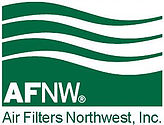Air filters are a critical component of your HVAC system, playing a key role in maintaining clean indoor air and ensuring efficient operation. However, choosing the wrong air filter size can lead to poor performance, increased energy costs, and even damage to your system. If you’ve ever wondered about the process behind selecting the perfect fit, you’re in the right place. In this article, we’ll walk you through everything you need to know about how to choose the right air filter size so you can make an informed decision and keep your HVAC system running smoothly.
Why Choosing the Correct Air Filter Size Matters
Selecting the correct air filter size is more than just a matter of convenience—it’s essential for the health of your HVAC system and the quality of your indoor air. Here’s why:
- Improved Airflow: An improperly sized filter can restrict airflow, forcing your system to work harder and consume more energy.
- Better Air Quality: A well-fitting filter ensures that all air passing through your system is properly filtered, removing dust, allergens, and pollutants.
- Prevent Damage: Gaps caused by undersized filters or strain from oversized ones can lead to costly repairs or premature system failure.
- Cost Savings: The right size helps your HVAC system operate efficiently, reducing energy bills and extending its lifespan.
Choosing the correct air filter size isn’t just about comfort—it’s about protecting your investment and ensuring optimal performance.
Understanding Air Filter Sizes
Before diving into the selection process, it’s important to understand what air filter sizes refer to and how they are labeled. Air filters are measured by three dimensions:
- Length (longest side): Typically ranges from 10 to 25 inches.
- Width (shorter side): Usually between 6 and 25 inches.
- Thickness (depth): Common options include 1-inch, 2-inch, 4-inch, or thicker filters for specialized systems.
Filters are often labeled with their nominal size , which is a rounded measurement used for marketing purposes (e.g., 16x20x1). However, the actual size —the precise dimensions of the filter—may differ slightly (e.g., 15.75×19.75×0.75). Always measure carefully to ensure compatibility.
Step-by-Step Guide: How to Choose the Right Air Filter Size
Choosing the right air filter size doesn’t have to be complicated. Follow these steps to ensure a perfect fit:
Step 1: Locate Your Current Air Filter
- Start by finding where your current air filter is installed. This could be near your furnace, air handler, or return air vent.
- Check if the existing filter has size information printed on its frame. While this is a good starting point, don’t rely solely on this data—it may not always match your system’s exact requirements.
Step 2: Measure Your Filter Slot
- Use a tape measure to determine the exact dimensions of the filter slot:
- Length: Measure the longest side of the slot.
- Width: Measure the shorter side.
- Thickness: Measure the depth of the slot.
- Be sure to measure the inside dimensions of the slot, as this is where the filter will sit.
Step 3: Compare Measurements to Standard Sizes
- Cross-reference your measurements with standard air filter sizes available on the market. For example:
- Nominal: 16x20x1 → Actual: 15.75×19.75×0.75
- Nominal: 20x25x4 → Actual: 19.75×24.75×3.75
- If your measurements don’t align with standard sizes, consider custom-sized filters or consult a professional.
Step 4: Verify Compatibility with Your HVAC System
- Ensure the chosen size fits snugly without gaps or obstructions. A loose filter allows unfiltered air to bypass, while an oversized one can damage your system.
- Refer to your HVAC system’s manual for specific recommendations on filter sizes and thicknesses.
Common Mistakes to Avoid When Choosing an Air Filter Size
Even small mistakes can have big consequences when selecting an air filter size. Here are some common pitfalls to avoid:
- Relying Solely on Nominal Sizes: Always verify actual dimensions before purchasing.
- Ignoring Manufacturer Recommendations: Some systems require specific sizes or types of filters.
- Overlooking Thickness: A filter that’s too thick may not fit properly, while one that’s too thin may allow bypass.
- Using Ill-Fitting Filters: Even slight gaps can compromise air quality and system efficiency.
Taking the time to double-check your measurements and research your system’s needs will save you headaches down the road.
Tools and Resources for Finding the Right Air Filter Size
If you’re unsure about sizing or need additional guidance, there are plenty of tools and resources available to help:
- Online Filter Size Calculators: Enter your measurements to find matching standard sizes.
- Manufacturer Guidelines: Consult your HVAC system’s user manual for recommended filter specifications.
- HVAC Contractors: For complex systems or custom sizing needs, a professional can provide expert advice and assistance.
These resources can simplify the process and ensure you get the right fit every time.
Special Considerations for Unique HVAC Systems
Not all HVAC systems are created equal, and some may require special attention when choosing an air filter size:
- Commercial or Industrial Systems: Larger systems often use custom-sized filters designed for high-capacity filtration.
- High-Efficiency Systems: Advanced systems may require thicker filters (e.g., 4- or 5-inch) or specialized options like HEPA filters.
- Older or Custom-Built Systems: Non-standard filter slots may necessitate custom solutions or modifications.
For these cases, working with a professional is highly recommended to ensure proper sizing and installation.
Conclusion
Choosing the right air filter size is a simple yet crucial step in maintaining a healthy, efficient HVAC system. By understanding the importance of proper sizing, learning how to measure accurately, and avoiding common mistakes, you can ensure your system performs at its best. Remember, the right air filter not only improves air quality but also saves you money and extends the life of your equipment.
Still unsure about sizing or need personalized advice? Our team of experts is here to help! Click here to contact us today and schedule a consultation. Let us guide you toward the perfect air filter solution for your home or business.
